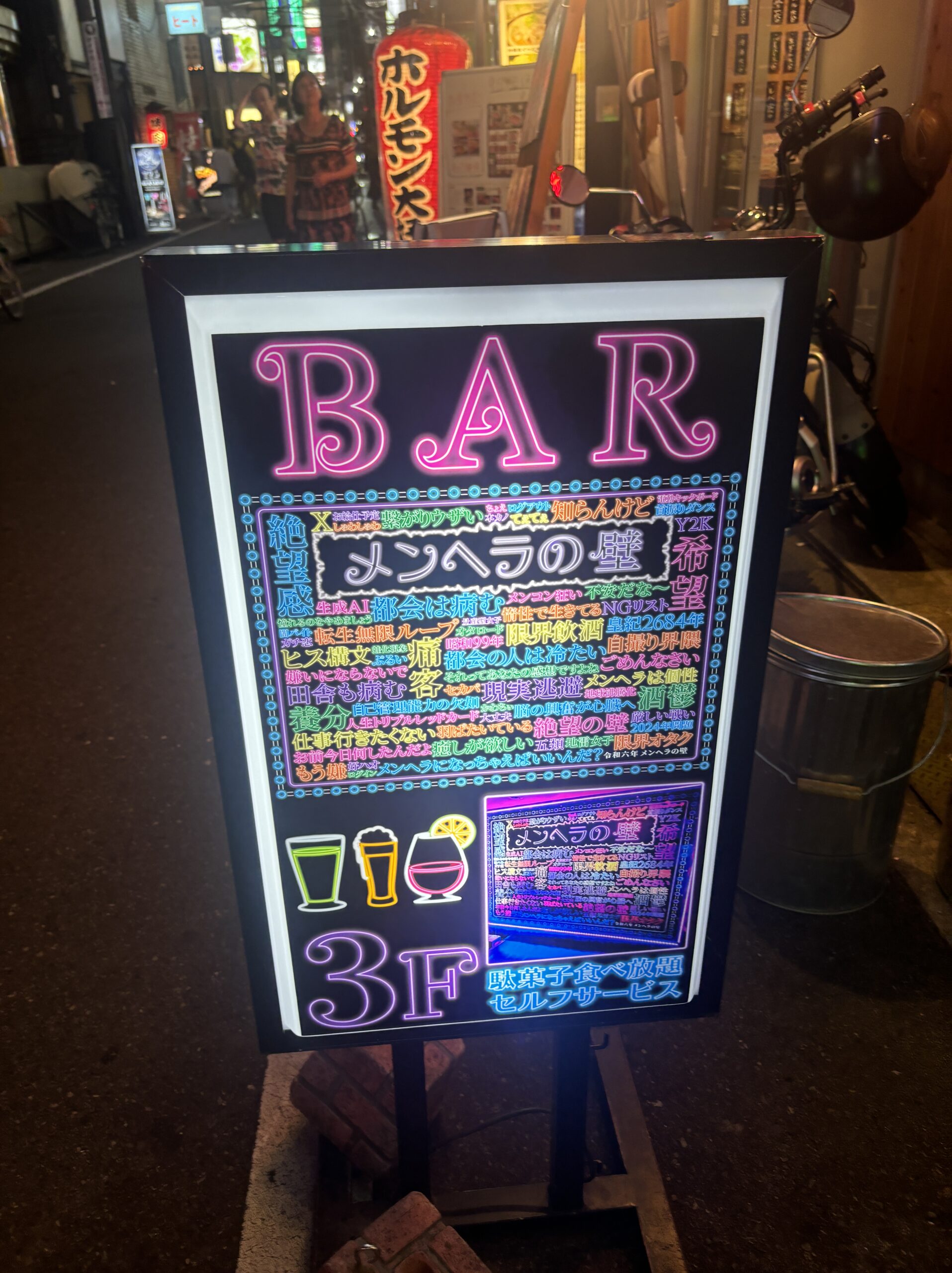My nighttime visits to Osaka usually focus on the Namba district, which attracts many Asian tourists due to its easy access from Kansai Airport. Osaka’s North and South areas offer distinct experiences: the North tends to have more upscale bars and restaurants, while the South caters to a younger, more tourist-oriented crowd with its energetic and slightly chaotic atmosphere. This likely explains why the South draws more inbound tourists from Korea, China, and Southeast Asian countries.
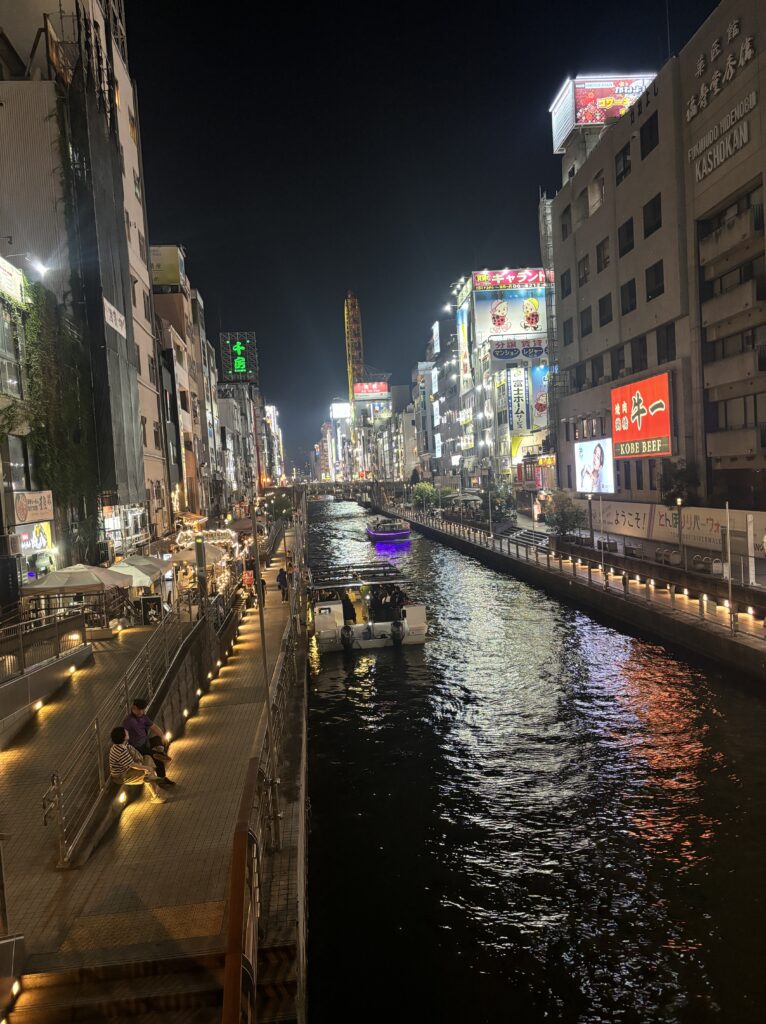
During my recent walk through the streets of South Osaka, I stumbled upon an intriguing bar called “Menhera-no-kabe,” which roughly translates to “the wall against Mental Health.” The name alone hinted at its unconventional style. As I entered, I noticed that the logo and interior were strikingly similar to a bar I had visited in Kabukicho, Shinjuku. Curious, I asked the owner about this resemblance, and he revealed that this Osaka location was actually the main shop, while the Shinjuku venue was a subsidiary.
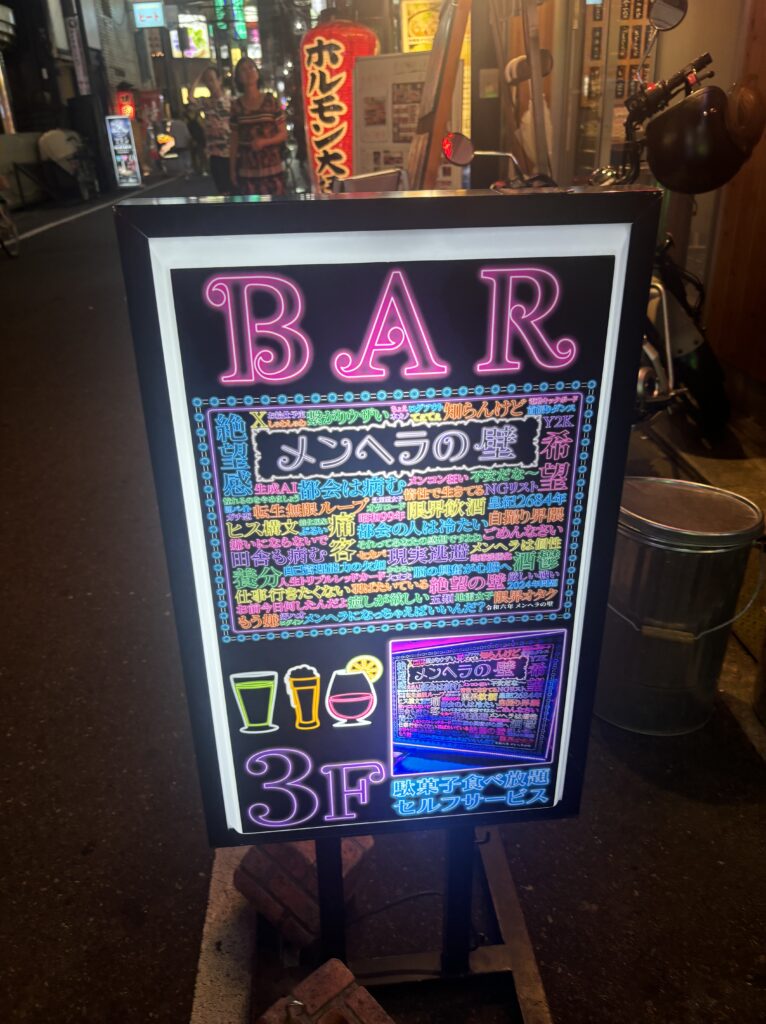
One notable difference between Osaka and Shinjuku bars is the staff composition. In Osaka, many bars employ a mix of male and female bartenders, whereas Shinjuku often features predominantly young female staff in what are known as “girls’ bars.” These Shinjuku establishments allow patrons to chat with female bartenders across the counter but don’t offer the companionship services found in traditional hostess bars. Osaka’s bar scene is more diverse, with some venues featuring mixed-gender staff and others specializing in cosplay or themed experiences. True to their reputation, Osaka locals – young and old, male and female – are skilled conversationalists, always ready with a joke to keep the atmosphere lively.
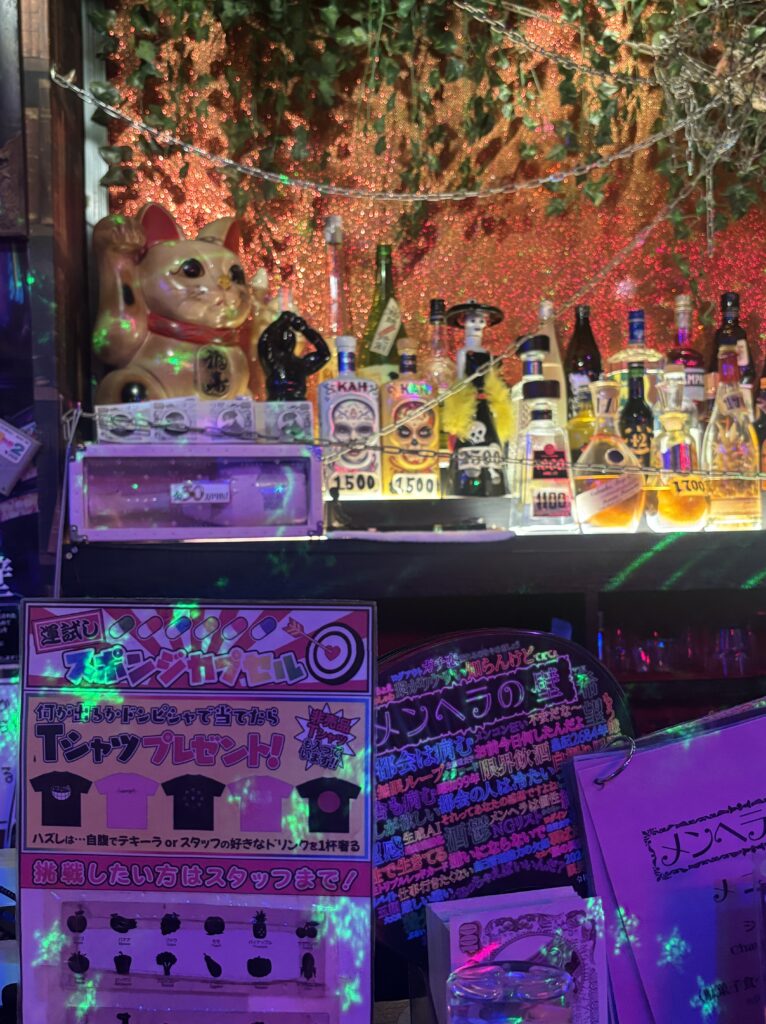
I started my evening with a highball before moving on to Kah tequila, a brand I’m quite familiar with. Throughout the night, our conversation covered various aspects of Osaka’s unique culture. The locals’ distinctive dialect and unwavering pride in their heritage set them apart from the rest of Japan, making them easily recognizable and showcasing their zest for life. One important note for overseas visitors: many bars in Japan, including “Menhera-no-kabe,” implement a cover charge system. In this case, there’s a ¥1,000 per person table charge in addition to the cost of drinks. This practice often surprises travelers accustomed to Western bar culture, where patrons typically pay for drinks at the counter immediately after ordering. The cover charge system, while common in Japan, is still relatively rare in other countries. Its purpose isn’t always clear to visitors, and even locals rarely question it. One possible explanation is that it guarantees engaging conversation with the staff. Unlike tap beer bars where interactions might be limited to ordering and payment, these establishments encourage friendly chats between patrons and bartenders. This system likely exists because maintaining conversations with customers requires more staff to handle orders, serving, and chatting simultaneously. The cover charge helps offset these additional labor costs and ensures a baseline revenue, regardless of how much each customer drinks. For those looking to experience Osaka’s nightlife, the Namba area offers a casual and welcoming atmosphere. Among the many bars in this district, I highly recommend visiting “Menhera-no-kabe” for its unique ambiance and friendly staff. Just remember to factor in the cover charge when planning your night out.
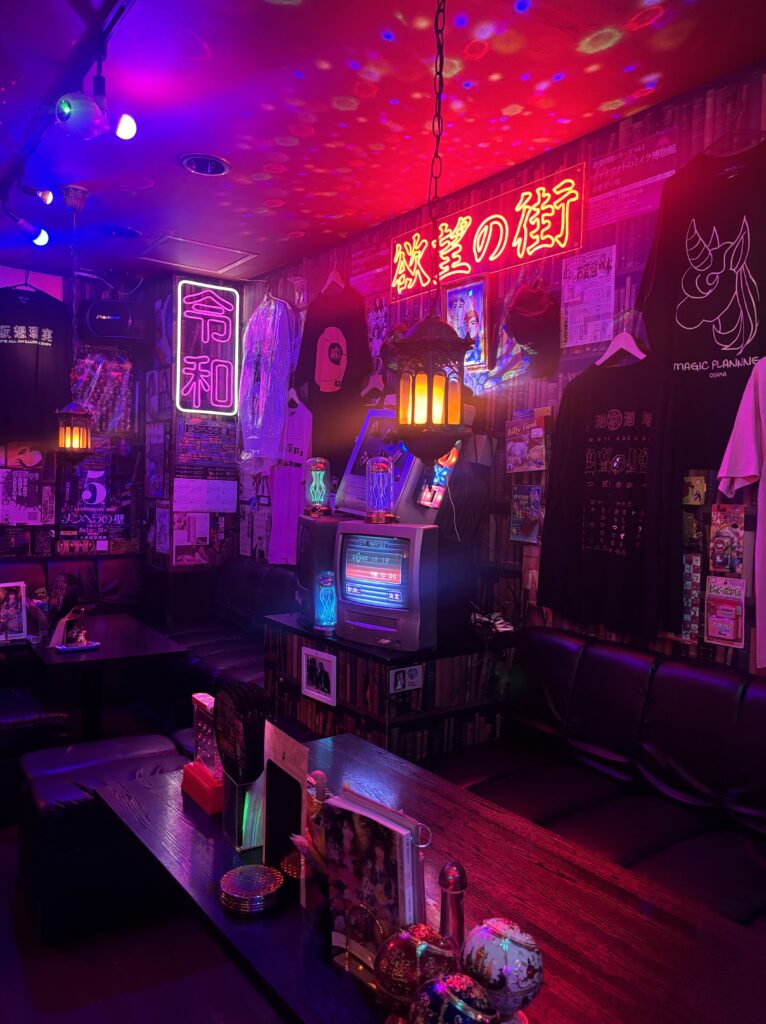
Share via:
